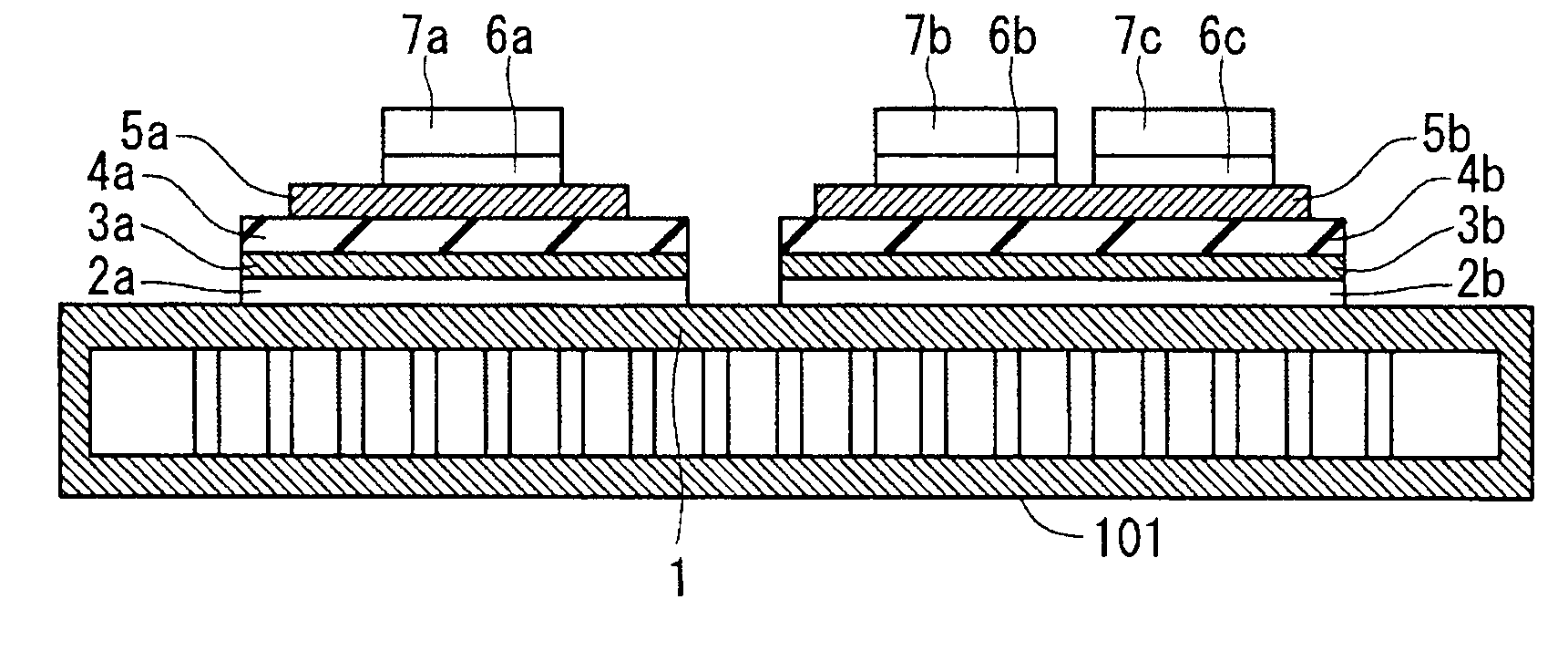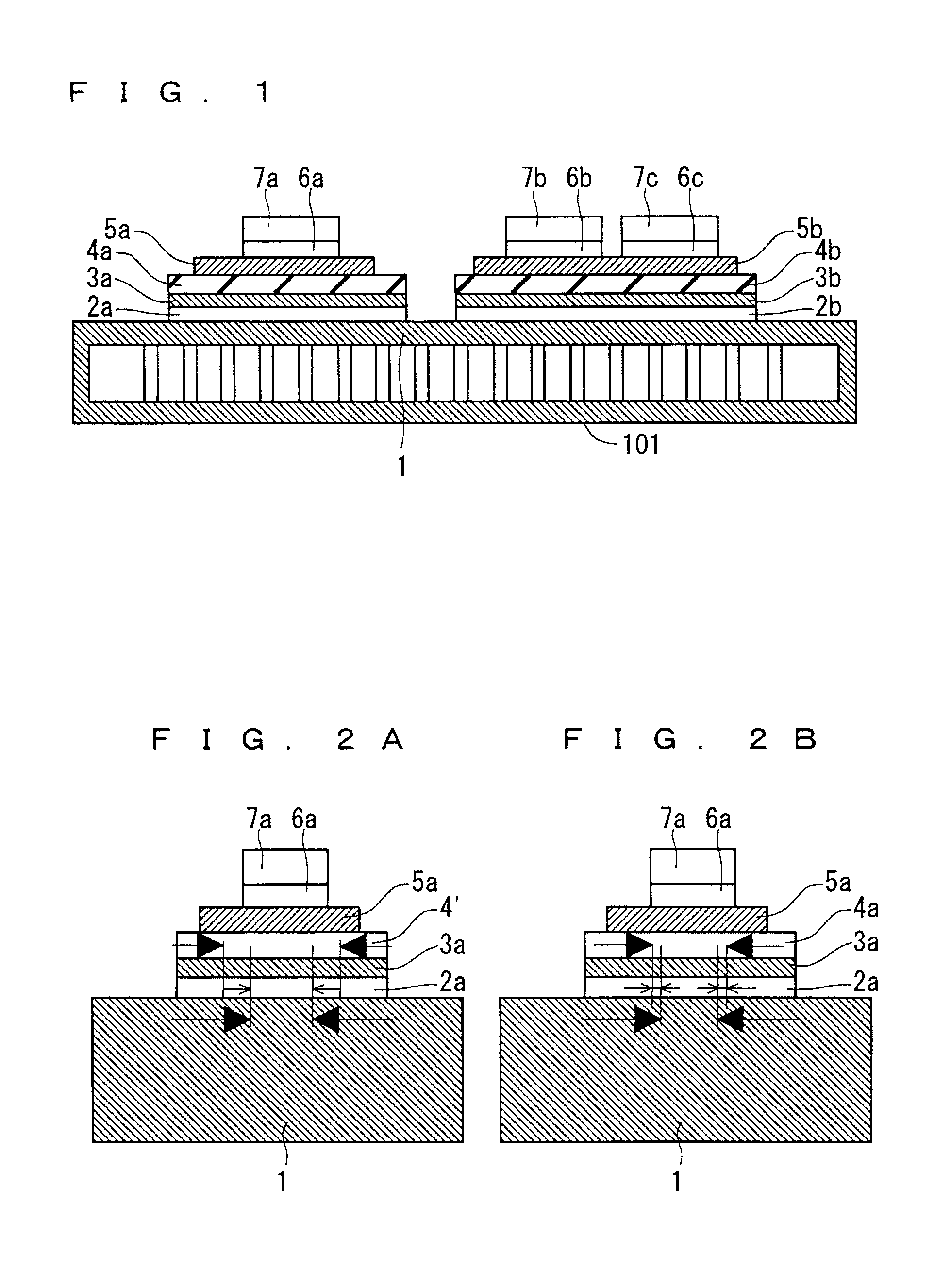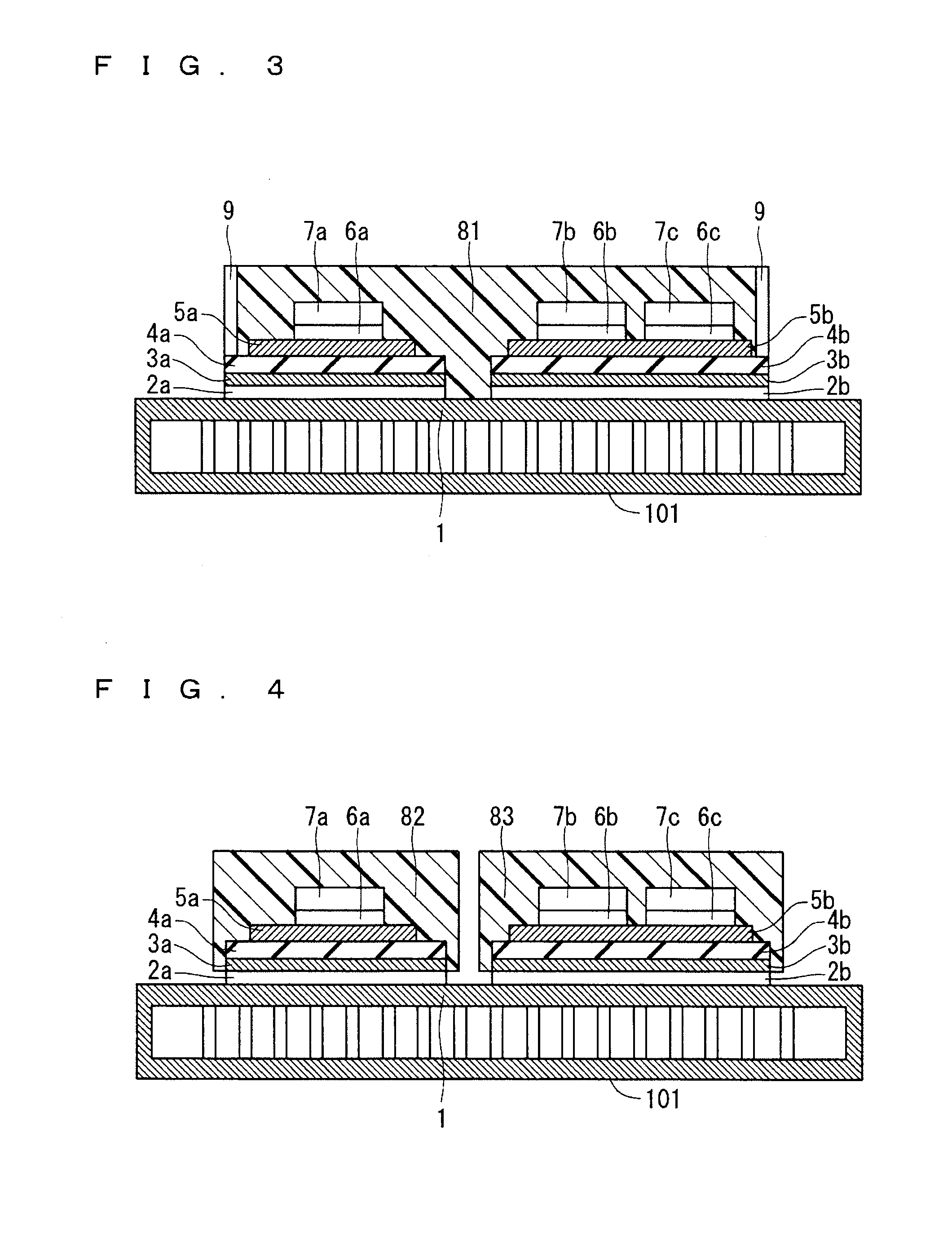Semiconductor device and method of manufacturing the same
a technology of semiconductor devices and heat dissipation characteristics, which is applied in the direction of semiconductor devices, semiconductor/solid-state device details, electrical devices, etc., can solve the problems of high cost of composite materials, degeneration of heat dissipation characteristics of heat dissipating elements, and limited reliability, so as to achieve satisfactory productivity, reduce cost, and respond to temperature changes. , the effect of low cos
- Summary
- Abstract
- Description
- Claims
- Application Information
AI Technical Summary
Benefits of technology
Problems solved by technology
Method used
Image
Examples
first preferred embodiment
Structure
[0020]FIG. 1 is a sectional view of the structure of a semiconductor device of a first preferred embodiment. The semiconductor device of the first preferred embodiment includes a cooler 101 with a metal base 1 constituting one main surface of the cooler 101 and functioning as a top plate, and a joined layer 3a secured to the metal base 1 through a joining layer 2a. The joined layer 3a and an insulating layer 4a formed on the joined layer 3a are formed integrally with each other for example by film coating, pressing, or adhesive bonding. A metal layer 5a is formed on the insulating layer 4a. A semiconductor element 7a is formed over the metal layer 5a through a joining layer 6a.
[0021]That is, the joining layer 2a, the joined layer 3a, the insulating layer 4a, the metal layer 5a, the joining layer 6a, and the semiconductor element 7a are provided in this order over the metal base 1 into a stacked structure, and a plurality of stacked structures is formed on the metal base 1....
PUM
| Property | Measurement | Unit |
|---|---|---|
| band gap | aaaaa | aaaaa |
| heat conductivity | aaaaa | aaaaa |
| stress | aaaaa | aaaaa |
Abstract
Description
Claims
Application Information
 Login to View More
Login to View More - R&D
- Intellectual Property
- Life Sciences
- Materials
- Tech Scout
- Unparalleled Data Quality
- Higher Quality Content
- 60% Fewer Hallucinations
Browse by: Latest US Patents, China's latest patents, Technical Efficacy Thesaurus, Application Domain, Technology Topic, Popular Technical Reports.
© 2025 PatSnap. All rights reserved.Legal|Privacy policy|Modern Slavery Act Transparency Statement|Sitemap|About US| Contact US: help@patsnap.com



